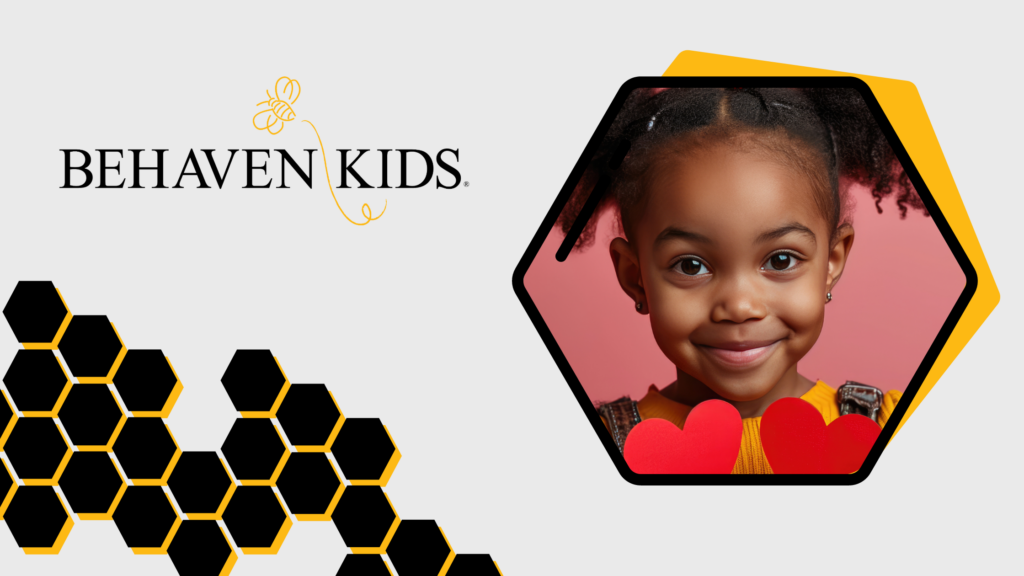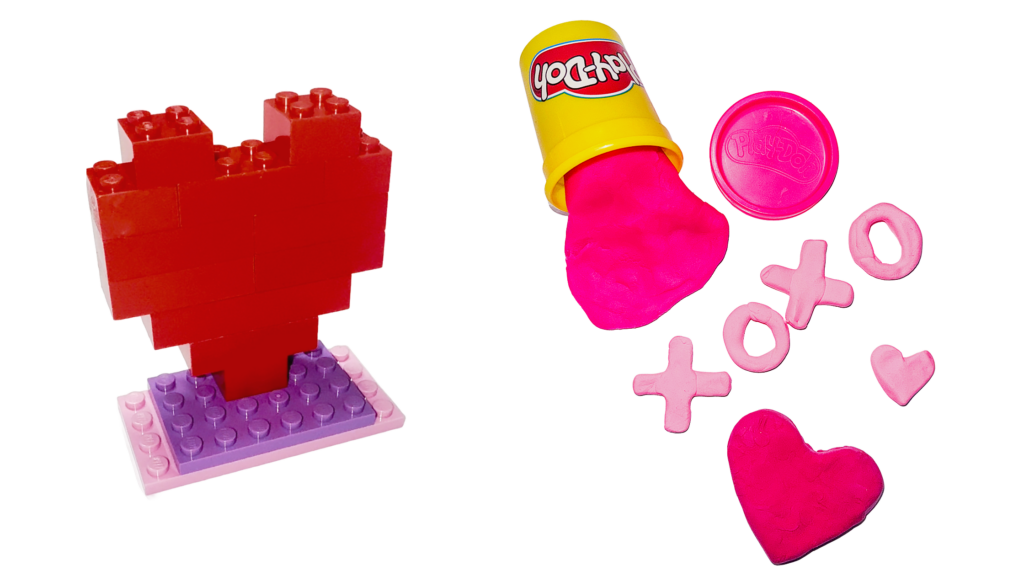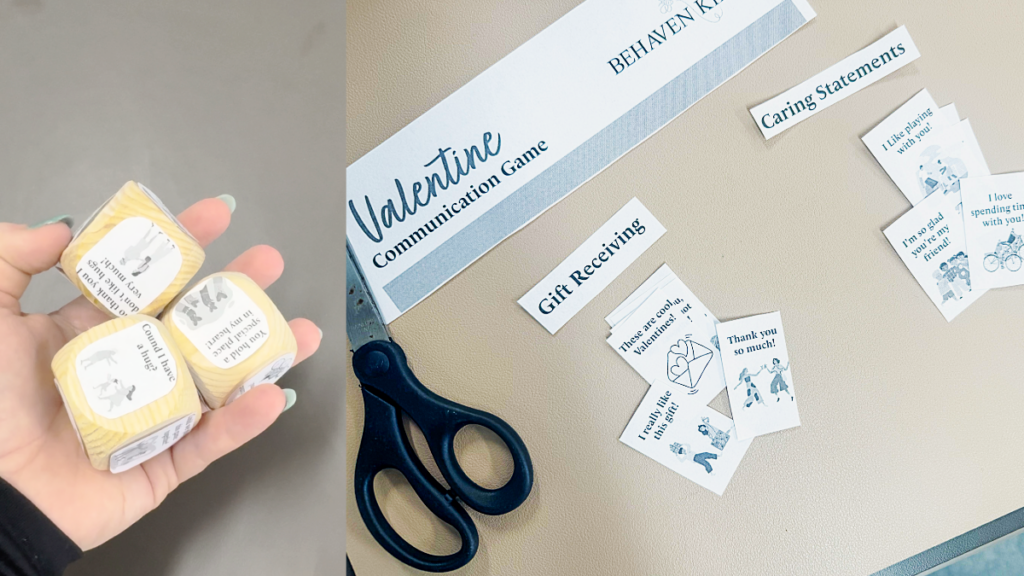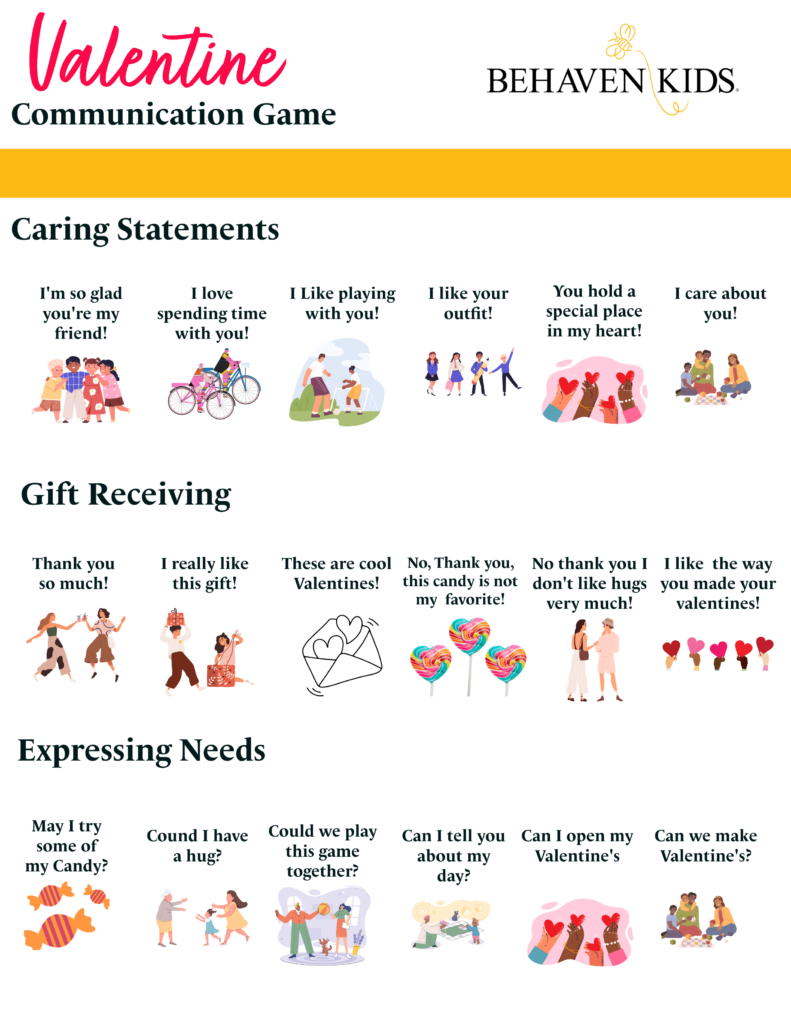
Valentine’s Day, while a fun holiday for children, can be particularly challenging for children with autism. Many unique challenges come with holidays like Valentine’s Day for neuro–divergent children. The commotion in celebrations like Valentine’s Day can bring on Sensory Sensitivity, Communication challenges, and social implications that make the holidays more difficult for Autistic Children. See this articlen (Tips for Celebrating Valentine’s Day with Autistic Children) that discusses these challenges and ways to help your children have a positive experience with Valentine’s Day this year.
In this article, we have included Valentine-themed activities to do with your children to help with refined motor skills and building social skills. We have also included a few sensory-based activities to help cope with the overwhelming stimuli that come with busy holidays for children.
Building Hearts

Molding hearts out of playdough, formable foam, or clay is a great way to help build motor skills while also sparking the creative part of their minds. Encourage them to make hearts and other Valentine-related shapes using their hands or cookie cutters. We made Xs and Os. This is a great opportunity to bring up the usage of colloquial sayings and explain their meaning (i.e. “I Love You, XOXO, Be My Valentine…).
For older children try using Legos to build these Lego hearts. This can be a great way to help build skills and communicate with your child. They can use these instructions. Using the Legos, children can build their fine motor skills and practice following directions to create a fun, Valentine-themed project.
Sensory Friendly Valentine Collage
Gather old valentines and various textures and materials, such as fabric scraps, foam shapes, and textured paper. Allow children to explore these materials with their hands and glue them onto a heart-shaped canvas. This activity provides a sensory-rich experience, promoting fine motor skills and creativity. Create a collage of valentines, this is a great way to make use of old materials and give into destructive tendencies through ripping and gluing old valentines into a fun craft project.
Valentine Communication Game

This is a great tool for helping kids learn how to navigate traditions surrounding Valentine’s Day. These skills can also be applied in other areas of their social life. Use these cards to help act out and explain scenarios with your kiddos. Practice proper responses and brainstorm other alternative statements to use with your child. We cut the cards out and pasted them onto dice to make the game more interactive!

Calming Glitter Bottle

Create a calming glitter bottle by filling clear containers with water, clear glue, and glitter. Tighten the lids securely and let the children shake the jars to watch the glitter swirl and settle. These jars serve as a calming sensory tool, great for creating visual and auditory stimuli.
Candy Heart Sorting
Grab a pair of tongs and a box of candy hearts. Help spread the hearts out on a clean surface or a plate. Help them sort the candy hearts by color using the tongs. This can help them to apply fine motor skills and aid with understanding some of the familiar Valentine’s sayings like “be mine” or “I <3 U”. When they have finished this activity, they can even enjoy a sweet Valentine-themed treat!
Valentine’s Day Sensory Bin

Materials Needed:
- Plastic bin or large container
- Colored rice or sensory-friendly filler (you can dye rice with food coloring)
- Heart-shaped objects (plastic, foam, or soft materials)
- Small containers or cups
- Tongs or scoops
- Valentine’s Day-themed toys (optional)
- Soft fabric or felt in various textures
- Scented items (lavender sachets, rose petals, etc.)
- Heart-shaped cookie cutters
Instructions:
- Prepare the Colored Rice:
- Dye rice with red or pink food coloring. Mix the rice and food coloring in a Ziploc bag until the color is evenly distributed. Let it dry completely before use.
- Set up the Sensory Bin:
- Place the colored rice in the plastic bin, filling it about halfway.
- Add heart-shaped objects, Valentine’s Day toys, and soft fabrics to the bin.
- Incorporate Textures:
- Cut different textures of fabric or felt into heart shapes and add them to the bin. This allows children to experience various tactile sensations.
- Scented Sensations:
- Add scented items like lavender sachets or rose petals to provide a pleasant olfactory experience.
- Use Small Containers and Tools:
- Place small containers or cups within the bin for scooping and pouring. Provide tongs or scoops to enhance fine motor skills.
- Introduce Shapes:
- Include heart-shaped cookie cutters for children to press into the rice, creating shapes and exploring different pressures.
- Engage Multiple Senses:
- Encourage children to explore the materials using their hands, fingers, and even feet. This engages multiple senses.
- Create a Relaxing Environment:
- Consider adding soft lighting or calming music to create a soothing atmosphere.
Safety Tips:
- Always be mindful of any allergies children may have to sensory materials.
- Supervise the activity to ensure safety and appropriate interaction.
- Be cautious with materials, especially if a child tends to put items in their mouth or attempts to ingest non-edible items (e.g., glue).
- If a child shows signs of discomfort or agitation, provide a quiet space for them to take a break.
Remember to tailor the activity to the specific preferences and sensitivities of the child. Sensory activities can be easily adapted to accommodate individual needs.
Conclusion
Valentine’s Day is an excellent opportunity to engage children in fun and meaningful activities that celebrate love and friendship. By tailoring crafts to be autism-friendly, we ensure that all children can participate in the joy of creating and expressing themselves. These crafts not only provide an outlet for creativity but also promote sensory exploration and social interaction, fostering a sense of connection and celebration for everyone involved. So, gather your crafting supplies, spread the love, and have a heartwarming Valentine’s Day!
